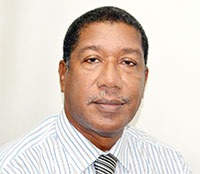PATIENTS walk into my office and take a seat. I ask, “What brings you to my clinic today?” Nine times out of ten (at least it seems that often) you say, “I just came to have a cleaning.” When I hear that, all I can do is look at you and wonder if you know how much of the big picture you are missing. If you think that a regular cleaning is mainly what your dentist can and should do for you, you are really short changing yourself.
Now, there is nothing wrong with wanting a cleaning. In fact, I had one myself a few months ago in Miami and so I am glad you want one. You have a definite advantage over the person who, for whatever reason, has not had a dental cleaning for years. However, a dental cleaning is treatment rendered under the care of a dentist after he or she makes a diagnosis regarding the healthy or diseased status of your teeth and gums. Based on that diagnosis, the type of treatment the dentist will recommend could range from prophylaxis, which is preventive gum therapy, to scaling, deep root cleaning, polishing, or more extensive gum therapy. Any other kind of dental cleaning is the one performed by you, using a toothbrush, toothpaste, and floss.
I believe at least 80 percent of Guyana’s adult population has some form of gum disease. Although not very common, children can get gum disease as well. Dentists can assess the risk of periodontal disease in both children and adults by using oral DNA tests that detect and measure the levels of specific pathogenic bacteria that cause periodontal disease.
By all means, go to your dentist and ask for a cleaning, but wait for the diagnosis, and get the recommended gum therapy according to that diagnosis. Your gums’ health, or what we call “periodontal health,” does not depend on your age or level of home care. If you have questions about how or why a dentist makes a diagnosis, find a dentist who will show you the evidence in an objective, measurable manner that you can understand. Ask yourself, “Why is it that I brush and floss regularly and yet my dentist tells me I have cavities and gum disease?”
A mouth is important, even from a child’s perspective. For instance, it is easy for my six-year-old grandson to answer when I ask him, “What do you do with your mouth?” “I eat with it,” he says. “I drink with it. I speak. I smile.” But the problem with most of us is that we see the mouth and its health as a separate entity from the rest of the body. I want to emphasise that although the mouth is vital, sensitive, and a complicated organ that requires its own specialisation, it is still a part of the body. Consider its anatomical position in relation to other adjacent structures. It is right next to the most sensory organs: eyes, ears and nose. It gives residence to the tongue, without which a person could not speak, taste, or swallow. It is the entryway into the body for nutrition, and it is the gateway to the airway.
A healthy mouth supports a healthy body and supports life. Yet, a person would not ignore a little swelling on his or her toe for a single day, but will live with rotting and abscessed teeth with bleeding gums for years. Why?



.jpg)








